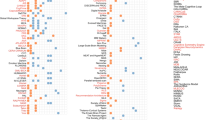Abstract
This paper proposes that each area of the cortex carries on its calculations with the active participation of a nucleus in the thalamus with which it is reciprocally and topographically connected. Each cortical area is responsible for maintaining and updating the organism's knowledge of a specific aspect of the world, ranging from low level raw data to high level abstract representations, and involving interpreting stimuli and generating actions. In doing this, it will draw on multiple sources of expertise, learned from experience, creating multiple, often conflicting, hypotheses which are integrated by the action of the thalamic neurons and then sent back to the standard input layer of the cortex. Thus this nucleus plays the role of an ‘active blackboard’ on which the current best reconstruction of some aspect of the world is always displayed. Evidence for this theory is reviewed and experimental tests are proposed. A sequel to this paper will discuss the cortico-cortical loops and propose quite different computational roles for them.
Similar content being viewed by others
References
Bender DB (1981) Retinotopic organization of the macaque pulvinar. J Neurophys 46:672–693
Blinkov SM, Glazer II (1968) The human brain in figures and tables. Basic Books, New York
Bransford J, Barclay JB, Franks J (1972) Sentence memory: a constructure vs. interpretive approach. Cogn Psychol 3:193–209
Brodal A (1981) Neurological anatomy. Oxford University Press, Oxford
Cherniak C (1990) The bounded brain. J Cogn Neurosci 2:58–68
Clark J, Yuille A (1990) Data fusion for sensory information processing systems. Kluwer Academic Press, Amsterdam
Crick F (1984) Function of the thalamic reticular complex: the searchlight hypothesis. Proc Natl Acad Sci 81:4586–4590
Erman LD, Hayes-Roth F, Lesser VR, Reddy R (1980) The HEARSAY-II speech understanding system. Comput Surv 12:213–253
Evarts EV (1973) Motor cortex reflexes associated with learned movement. Science 179:501–503
Felleman DJ, Van Essen DC (1991) Distributed hierarchical processing in primate cerebral cortex. Cerebral Cortex: (to be published)
Gemba H, Hashimoto S, Sasaki K (1981) Cortical field potentials preceding visually initiated hand movements in monkeys. Exp Brain Res 42:435–441
Georgopoulos AP, Lurito JT, Petrides M, Schwartz AB, Massey JT (1989) Mental rotation of the neuronal population vector. Science 243:234–236
Graybiel AM, Berson DM (1981) Families of related cortical areas in the extrastriate visual system. In: Cortical sensory organization, vol 2. Humana Press, Clifton, NJ, pp 103–120
Harth E (1983) Windows on the mind. Quill, New York
Harth E, Unnikrishnan KP, Pandya AS (1987) The inversion of sensory processing by feedback pathways: a model of visual cognitive functions. Science 1987:184–187
Jahnsen H, Llinas R (1984) Electrophysiological properties of guineapig thalamic neurons: an in vitro study. J Physiol London 349:205–247
Jones EB (1985) The thalamus. Plenum Press, New York
Lindsey P, Norman D (1977) Human information processing. Academic Press, New York
Luria AR (1969) Higher cognitive functions in man, 2nd edn. Moscow University Press, Moscow (English edn 1980, Basic Books, New York)
Marr D (1982) Vision. Freeman, San Francisco
Minsky M (1975) A framework for representing knowledge. In: Winston P (ed) The psychology of computer vision. McGraw-Hill, New York
Mjolness E, Gindi G, Anandan P (1988) Optimization in model matching and perceptual organization. Research report YaleU/ DCS/RR-634
Ojemann G (1983) Brain organization for language from the perspective of electrical stimulation mapping. Behav Brain Sci 2:189–206
Rockel AJ, Hiorns RW, Powell TPS (1980) The basic uniformity in structure of the neocortex. Brain 103:221–244
Selfridge O (1959) Pandemonium: a paradigm for learning. In: Symposium on the Mechanization of Thought Processes. HM Stationary Office, London
Shepherd G (1990) The synaptic organization of the brain, 3rd edn. Oxford University Press, Oxford.
Sherman SM, Koch C (1986) The control of retinogeniculate transmission in the mammalian lateral geniculate nucleus. Exp Brain Res 63:1–20
Steriade M, Llinas RR (1988) The functional states of the thalamus and the associated neuronal interplay. Physiol Rev 68:649–742
Steriade M, Domich L, Oakson G (1986) Reticularis thalami neurons revisited: activity changes during shifts in states of vigilance. J Neurosci 6:68–81
Treisman A (1988) Features and objects. Q J Exp Psychol 40A:1988
Ullman S (1984) Visual routines. Cognition 18:97–159
Van der Heydt R, Peterhans E (1989) Cortical contour mechanisms and geometrical illusions. In: Lam DM, Gilbert CD (eds) Neural mechanisms of visual perception. Gulf, Houston, Texas
Weller RE, Kaas JH (1981) Cortical and subcortical connections of visual cortex in primates. In: Cortical sensory organization, vol 2. Humana Press, Clifton, NJ, pp 121–156
Winston P (1975) Learning structural descriptions from examples. In: Winston (ed) The psychology of computer vision. McGraw-Hill, New York
Author information
Authors and Affiliations
Rights and permissions
About this article
Cite this article
Mumford, D. On the computational architecture of the neocortex. Biol. Cybern. 65, 135–145 (1991). https://doi.org/10.1007/BF00202389
Received:
Issue Date:
DOI: https://doi.org/10.1007/BF00202389




